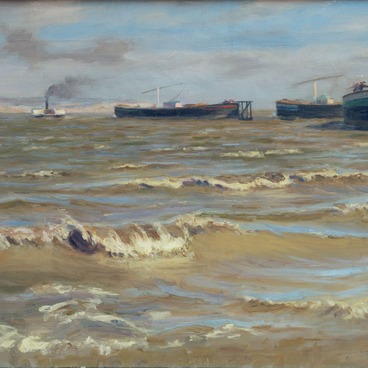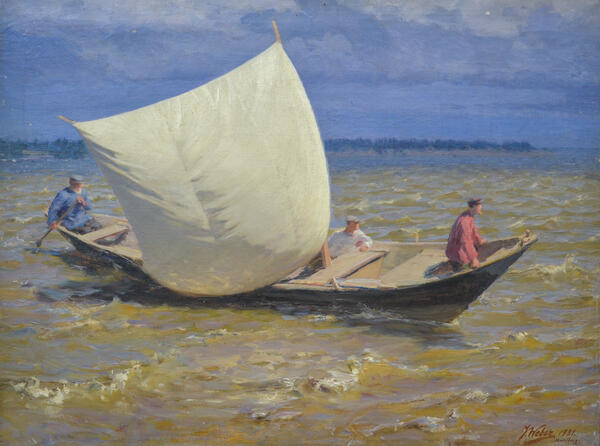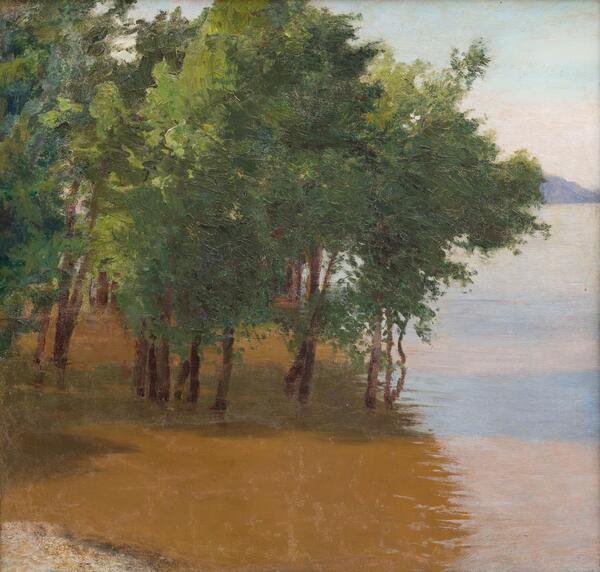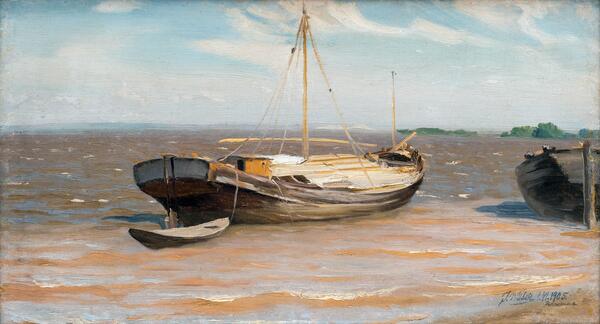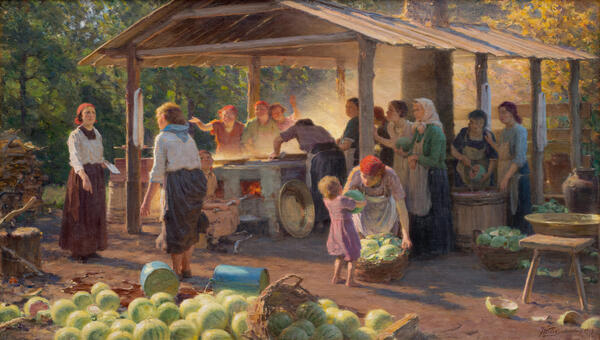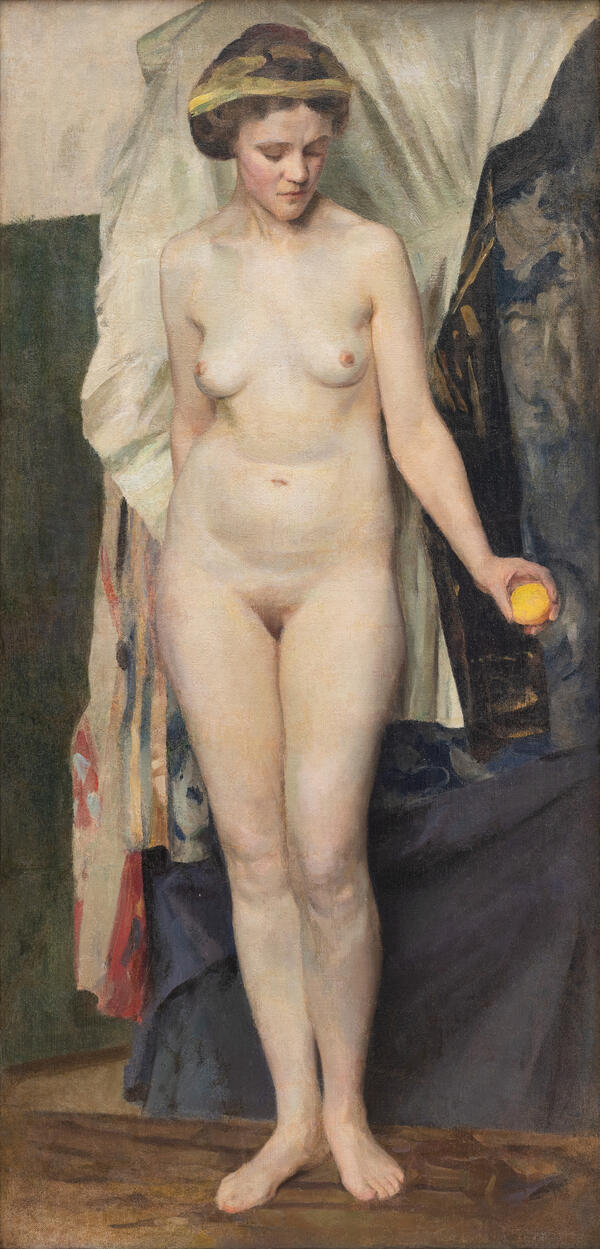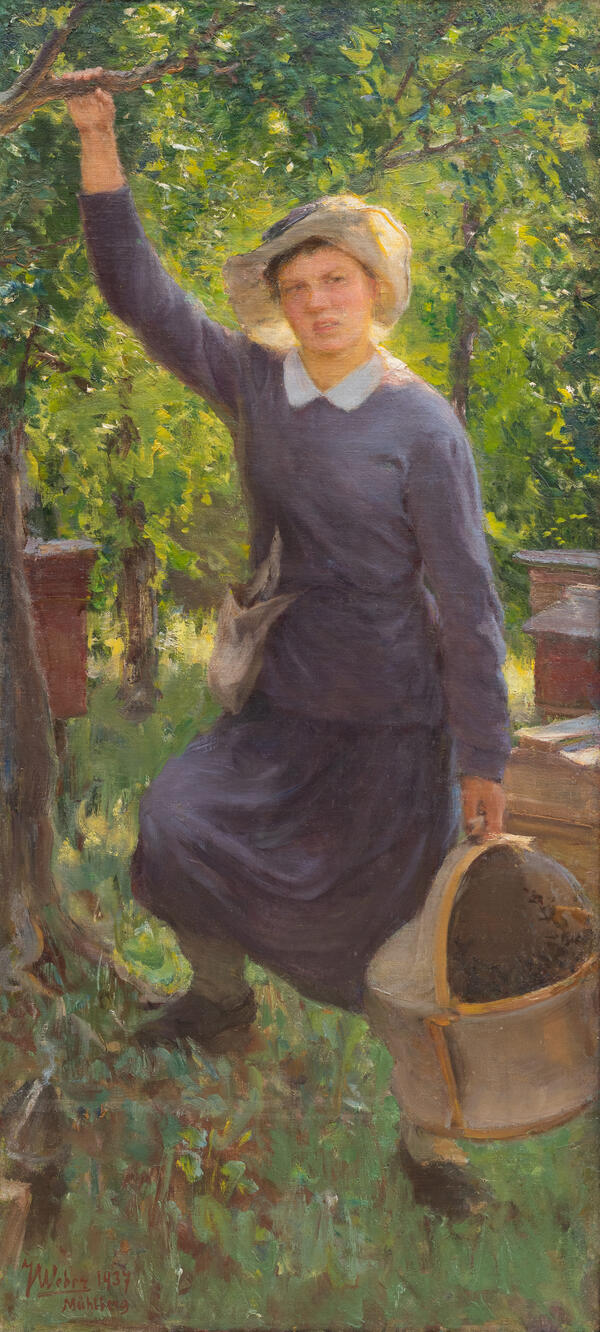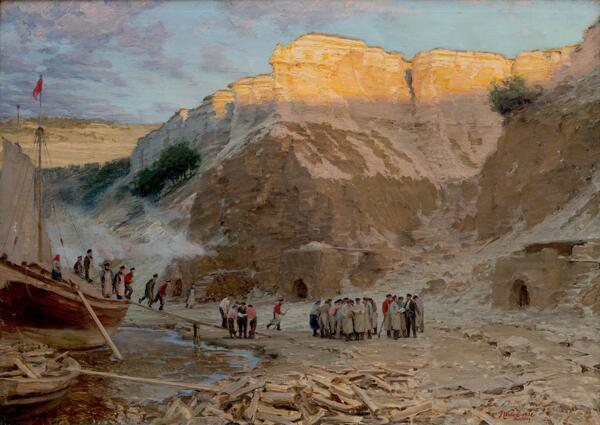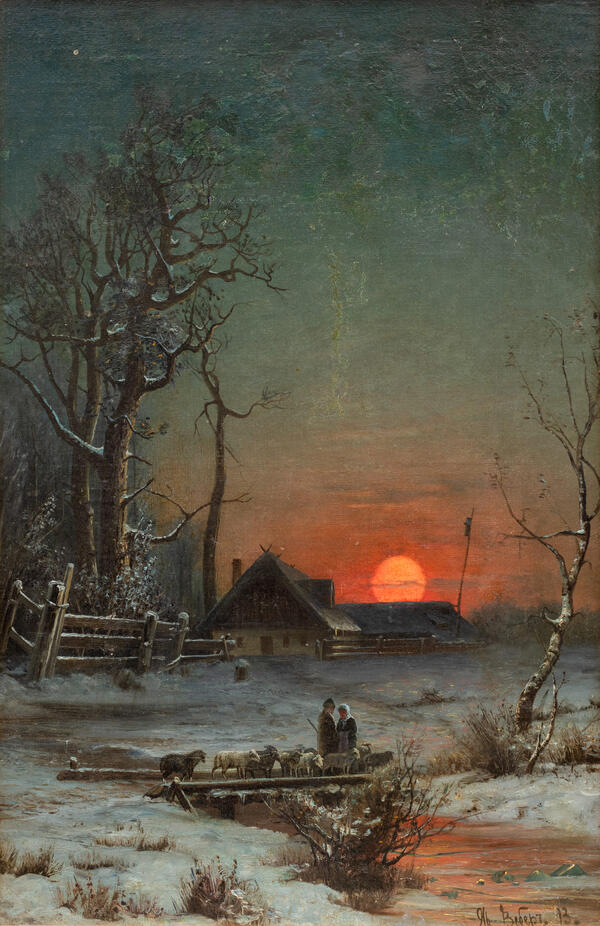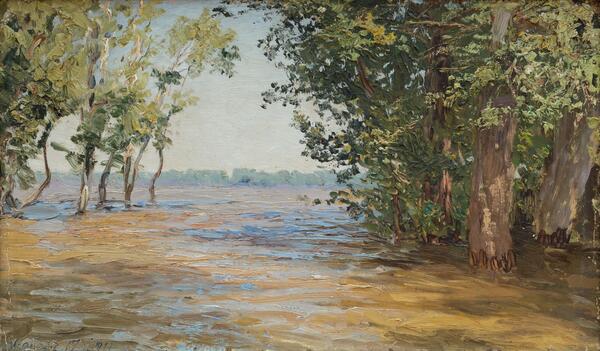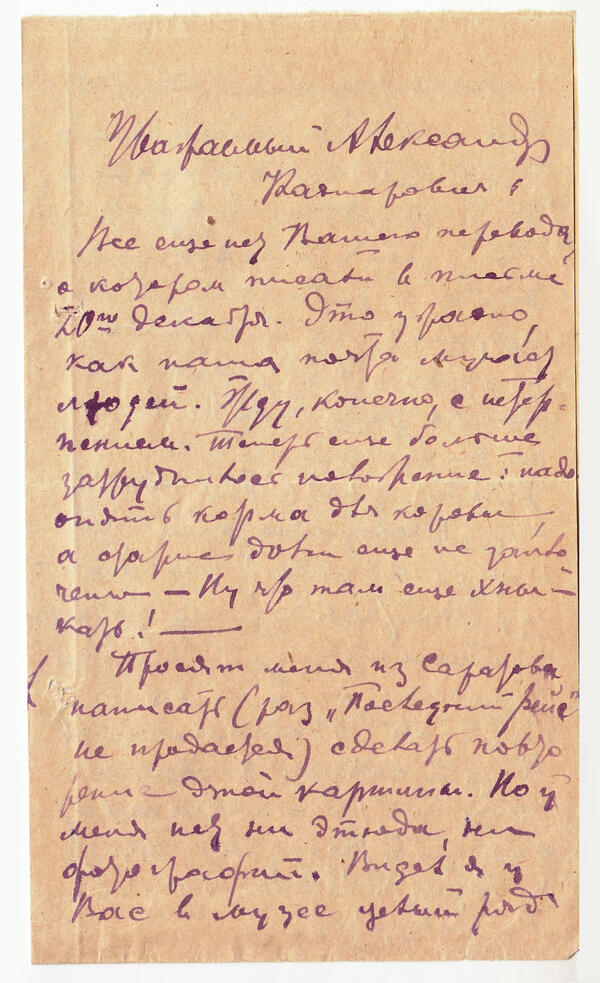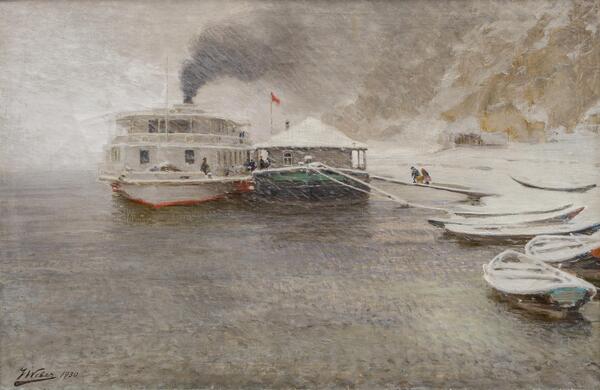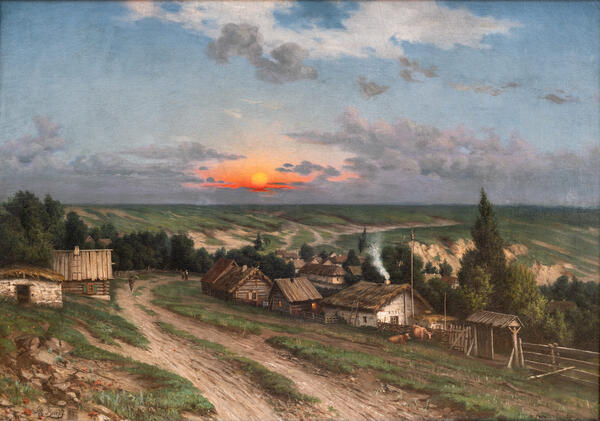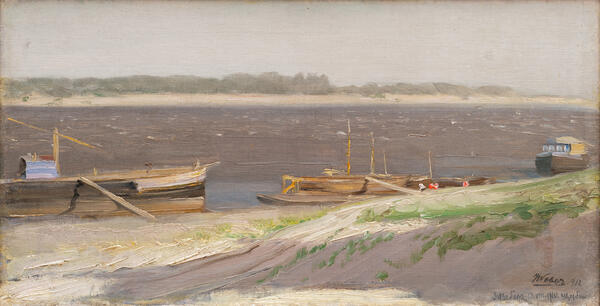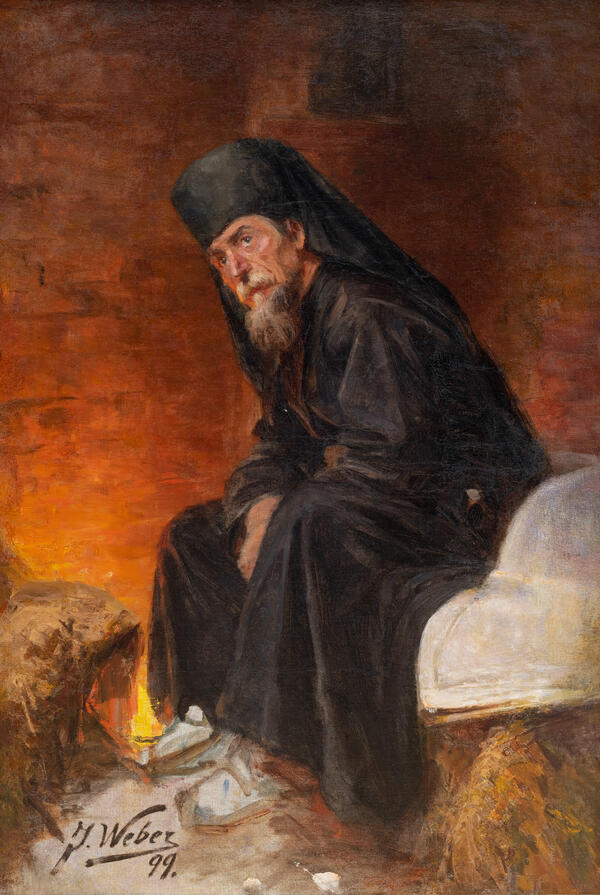The exhibition of the Engels Museum of Local Lore includes a study “Forest in Autumn” by Yakov Yakovlevich Weber.
The canvas depicts golden autumn, with yellow foliage of trees against a clear blue sky. The painter did not limit himself to the depiction of small details, but through broad, generalized painting he achieved the integrity of the perception of a large form. Weber’s favorite technique was cropping the image, when part of the depicted objects, in this case trees are cut off by the edge of the picture. For the artist the correlations of the main pictorial masses were important: sky, earth and tree crowns. Everything was interconnected by the light flow.
The etude is also remarkable because it reveals the artistic objectives that the painter set for himself at this stage of his creative career. The impasto brushstrokes, which delicately coexist with smooth painting, become of great importance for Weber.
In the 1920s, Weber with his wife Leontina Ivanovna Freiwald and son Leonhard lived on the Volga River in his beloved Shcherbakovka in his house with a workshop. The artist settled there permanently, painting a lot from nature and creating his best works, periodically visiting Pokrovsk-Engels. From the mid-1920s, Weber established contacts with the artists of Saratov and Engels. Valentin Yustitsky, Pyotr Utkin, Yevgeny Egorov, Boris Milovidov, Ivan Shcheglov and others came to his place to create studies. Weber was repeatedly invited to teach at the Saratov Art School and even at the Leningrad Academy of Arts, which he refused consistently.
In the 1930s, Yakov Weber played an important role
in shaping the artistic environment in Engels, the capital of the Volga German
Republic. He taught painting to village youth and worked in the republican art
studio and in the Engels House of Folk Art. His paintings made up the first art
collection of the Central Museum of the Volga German ASSR. Weber united
talented artists around him. Under his influence Boris Milovidov, Yevgeny
Zhuravlev, Richard Berg, Rebane Ehrlich and many others began their creative
careers. In 1933, Weber was awarded the title of Honored Art Worker of the
Volga German ASSR. He was the first and only artist of the republic to be awarded
such a high recognition.


